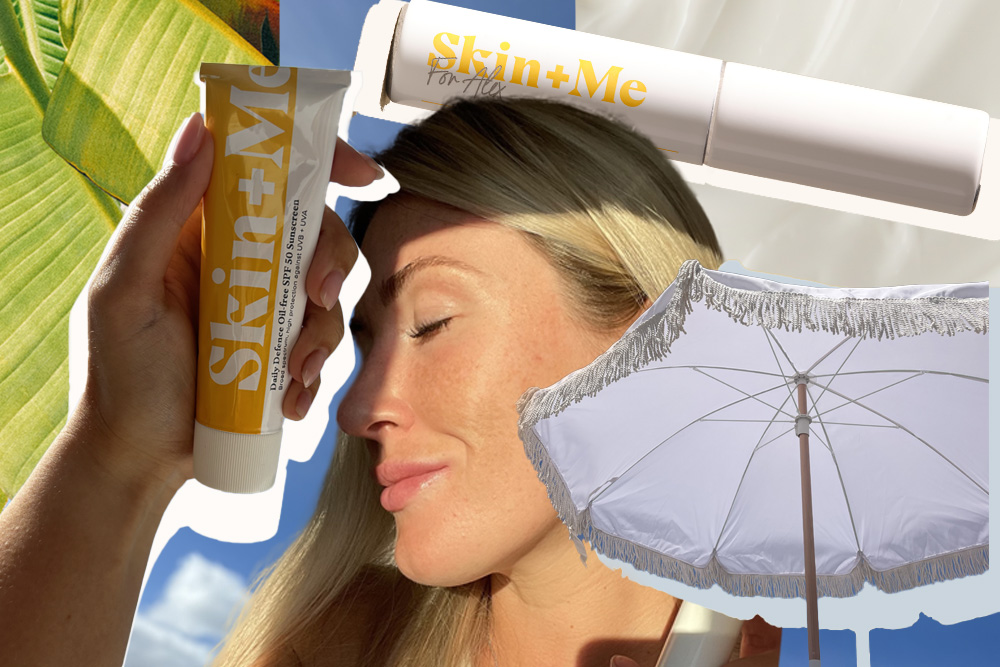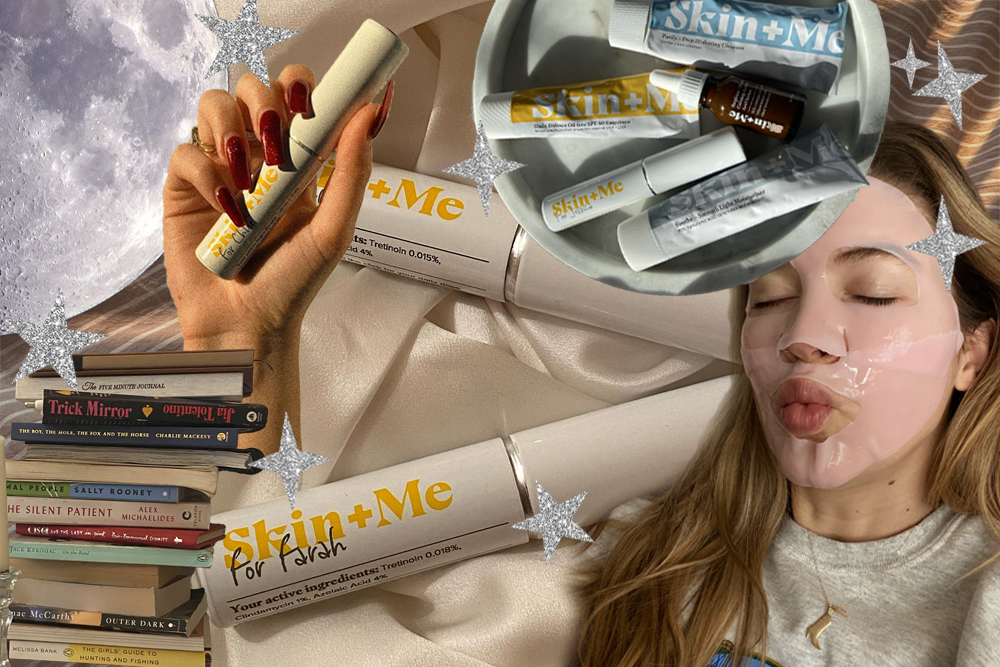Melasma 101

Link to share article here:
How To Build A Skincare Routine, According To Dermatologists
Like anything that gets built, a strong base is vital. If you’re creating a skincare routine from scratch, securing a solid core routine is priority number one – no matter your skin goal. Active ingredients are powerful and effective, but they won’t work as intended if you don’t have your basic routine locked down. From cleansers and moisturisers, to treatments and sunscreens, we’re breaking down the basics and serving up expert advice from our Dermatology Team.
How To Build A Skincare Routine
For starters, Consultant Dermatologist, Dr Malvina Cunningham tells us “a skincare routine doesn’t have to be elaborate or expensive. Understanding what your skin needs and what you would like to achieve and then finding the right ingredients to do this is key.”
A good skincare routine consists of a morning and an evening routine, and they should differ slightly.
In the morning:
- Cleanser
- Treatment (although not essential, some people like to level up their routine a vitamin C or azelaic acid serum in the morning)
- Moisturiser
- Sunscreen
In the evening:
- Cleanser
- Treatment (if you use a tailored prescription treatment, this is the time to use it )
- Moisturiser
Step One: Cleanse
Cleansing is arguably the most important step in your routine. Not only does it remove makeup, leftover actives, sunscreen, dirt and oil build-up, but it also prepares your skin for the rest of your routine.
A good cleanser, like our Skin + Me Purify + Prep range, can be used in the morning and at night. It shouldn’t leave your skin feeling tight – instead it should create a clean surface for your next steps. Ingredients such as glycerin – a humectant – work to keep your skin gently hydrated.
You’ll want to look for a skin-type specific cleanser. An oil-based cleanser or cleansing balm is great for dry skin, while an oil-free, foaming cleanser will benefit oily skin, and mitigate the risk of further breakouts.
You can also find certain actives in cleansers, such as salicylic acid or benzoyl peroxide, but these are usually targeted to certain skin issues, such as acne. Dr Jason, Head of Medical at Skin + Me adds, “Cleansers with a mild acid such as PHA (polyhydroxy acid – gentler than its cousins AHA and BHAs) will add mild exfoliation to help brighten dull-looking skin without compromising barrier function.”
Step Two: Treat
Using a treatment containing active ingredients is the best thing you can do to target your personal skin concerns. However, picking the right ones for your routine can be a real challenge. Skin + Me makes it easy by creating custom evening formulations of actives that evolve over time, so you know your skin is getting what it needs.
Tretinoin targets acne, skin-ageing and hyperpigmentation. It’s often paired with anti-inflammatory hero azelaic acid. Niacinamide keeps oil production in check, while metronidazole puts out the flames of rosacea and hydroquinone manages melasma.
Dr Malvina Cunningham explains: “If you want the benefits of a number of different ingredients, I would always recommend a well-formulated product that contains all the required actives in one. This way, you can ensure the ingredients work well together and are formulated for optimal function and absorption.”
You might also pick and choose actives based on your skin goals – this can be a good addition to your morning routine. Vitamin C if you need a little support with your dark spots and pigmentation, hyaluronic acid if you’re looking for bang-for-your-buck hydration, or a gentle AHA or BHA to help smooth out rough texture. Just remember that less is more, so don’t overload yours skin – keep it to one treatment in the morning and one in the evening, at least until your skin adapts.
New to Skin + Me? Get your first month of personalised skincare for £4.99 with promo code DOSE – complete our quick consultation here.
Step Three: Hydrate
Is there a better feeling than applying a cooling moisturiser, when you can actually feel your skin soften to the touch, leaving you ready to take on the day (or hit the hay).
“Good moisturisers contain barrier-friendly ingredients such as glycerin and ceramides,” says Dr Jason. “These are great at repairing your skin barrier”. Humectants, such as betaine, hyaluronic acid and glycerin attract and retain moisture – they’re great for all skin types. For drier skin, look out for ultra-nourishing ingredients like shea butter.
A good moisturiser is key when using active ingredients, particularly in the first few weeks of your new routine. By repairing, replenishing and restoring the skin’s barrier, you stand a better chance of coping with side effects such as dryness, flaky skin and irritation.
Step Four: Protect
Last, but certainly not least – sunscreen. Dr Malvina tells us that “a broad-spectrum sunscreen with a filter of at least SPF 30 should be worn all year round. Sunscreen is a must-have for anyone who would like to maintain healthy skin, tackle skin ageing and treat any medical skin conditions such as acne or rosacea.”
The sun’s UV rays are the main cause of skin cancer and premature ageing, and sunscreen is a key tool in our armoury for protecting our skin – so how do you find the right one for your face?
First, choose between a mineral or chemical formulation. Dr Jason explains “Chemical sunscreen filters absorb UV light and convert it into heat using ingredients such as octinoxate and avobenzone. Mineral sunscreen filters use compounds, such as zinc oxide and titanium dioxide, that reflect and scatter UV light.”
Chemical sunscreens are generally more popular, as they have a lighter texture and tend to dry down clear – that was our priority when creating our cult favourite, Daily Defence SPF 50 Oil-free Sunscreen. Meanwhile, mineral sunscreens are usually thicker and prone to leaving a white cast unless tinted, mainly due to the mineral filter compounds which sit on the skin.
Second, find a formulation that suits your skin type. If you have oily skin, find an oil-free sunscreen, as they’re less likely to lead to breakouts. For those on the dry side, look for a hydrating formulation to support your skin. Remember that foundations or moisturisers with SPF included tend to be less effective than sunscreen on their own, so layer them with sunscreen for guaranteed protection.
Finally, always make sure that sunscreen is the last layer you apply before your makeup, and allow it to dry down before you do so. Dr Jason recommends applying “six teaspoons of sunscreen, for an average-sized adult.” An easier method is to use two fingers worth – drape the sunscreen across the length of your index and middle fingers and apply it all over your face and neck.
Final thoughts
A simple, solid routine is all you need to achieve happy and healthy skin. With a nourishing moisturiser and cleanser suited to your skin type, plus a superstar sunscreen and a treatment – bonus points if it’s tailored to you – you’re on the way to your best skin yet.
New to Skin + Me? Get your first month of personalised skincare for £4.99 with promo code DOSE – complete our quick consultation here.
Looking for a routine refresh? Add the Dream Routine to your Skin + Me subscription.
In need of a restock? Head to The Skincare Shop for one-off purchases of your Routine Essentials.
New to Skin + Me? Get your first month of personalised skincare for £4.99 with promo code DOSE – complete our quick consultation here.
Looking for a routine refresh? Add the Dream Routine to your Skin + Me subscription.
In need of a restock? Head to The Skincare Shop for one-off purchases of your Routine Essentials.



